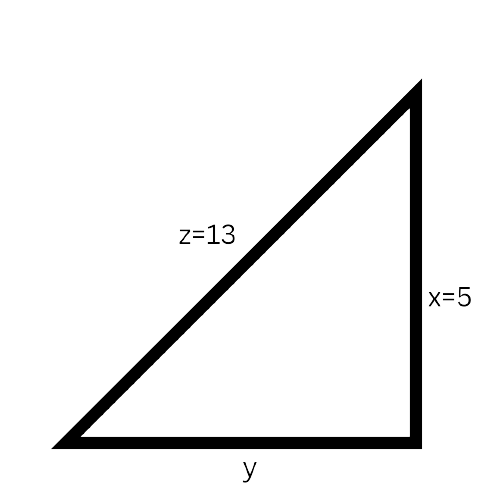Step-by-Step Guide to Solving for the Missing Leg in Right Triangles
FAQs on Find the Missing Leg: Pythagorean Theorem Worksheet for Students
1. What is the Pythagorean theorem and what is its main purpose in Maths?
The Pythagorean theorem is a fundamental principle in geometry that states that in a right-angled triangle, the square of the hypotenuse (the side opposite the right angle) is equal to the sum of the squares of the other two sides (legs). Its main purpose is to find the length of a missing side when the lengths of the other two sides are known, using the formula a² + b² = c².
2. How do you identify the 'legs' and the 'hypotenuse' in a right-angled triangle?
In any right-angled triangle, the hypotenuse is always the longest side and is located directly opposite the 90-degree angle. The other two sides, which form the right angle, are called the legs. Correctly identifying these parts is the first crucial step before applying the Pythagorean theorem to find a missing side.
3. What is the specific formula used to find a missing leg of a right-angled triangle?
To find a missing leg (for example, side 'a'), you must rearrange the standard Pythagorean formula. The correct formula is a² = c² - b². This means you subtract the square of the known leg ('b') from the square of the hypotenuse ('c'). Afterwards, you calculate the square root of the result to determine the length of the missing leg 'a'.
4. Why is it impossible for a leg of a right-angled triangle to be longer than the hypotenuse?
It is mathematically impossible because the hypotenuse is, by definition, the side opposite the largest angle (90°) in a right-angled triangle, which makes it the longest side. According to the formula c² = a² + b², the square of the hypotenuse is the sum of the squares of the two legs. Therefore, the value of 'c' must always be greater than both 'a' and 'b' individually.
5. What is the most common mistake students make when trying to find a missing leg?
The most common mistake is incorrectly adding the squares of the sides instead of subtracting. When solving for a leg (side 'a' or 'b'), you must subtract the square of the known leg from the square of the hypotenuse (e.g., a² = c² - b²). Accidentally using addition (a² = c² + b²) is a frequent error that leads to an incorrect answer.
6. Can you use the Pythagorean theorem for triangles that are not right-angled?
No, the Pythagorean theorem is a special property that applies exclusively to right-angled triangles. The entire relationship described by a² + b² = c² is dependent on one angle being exactly 90 degrees. Using this formula for acute or obtuse triangles will not produce correct side length measurements.
7. How does practising with a worksheet improve understanding of the Pythagorean theorem?
Practising with a dedicated worksheet helps solidify the concept in several ways:
It trains you to quickly and accurately identify the legs and hypotenuse in different orientations.
It provides essential practice in correctly rearranging the formula to solve for a leg versus the hypotenuse.
It builds confidence and speed in performing the required calculations involving squares and square roots.
8. What are some real-world examples where you would need to find the missing leg of a right triangle?
You can apply this concept in many practical situations. For instance:
A carpenter knows the length of a diagonal support beam (hypotenuse) and the width of a frame (one leg). They can calculate the required height of the frame (the other leg).
To find how high a ladder reaches on a wall, if you know the ladder's length (hypotenuse) and the distance of its base from the wall (one leg).

































